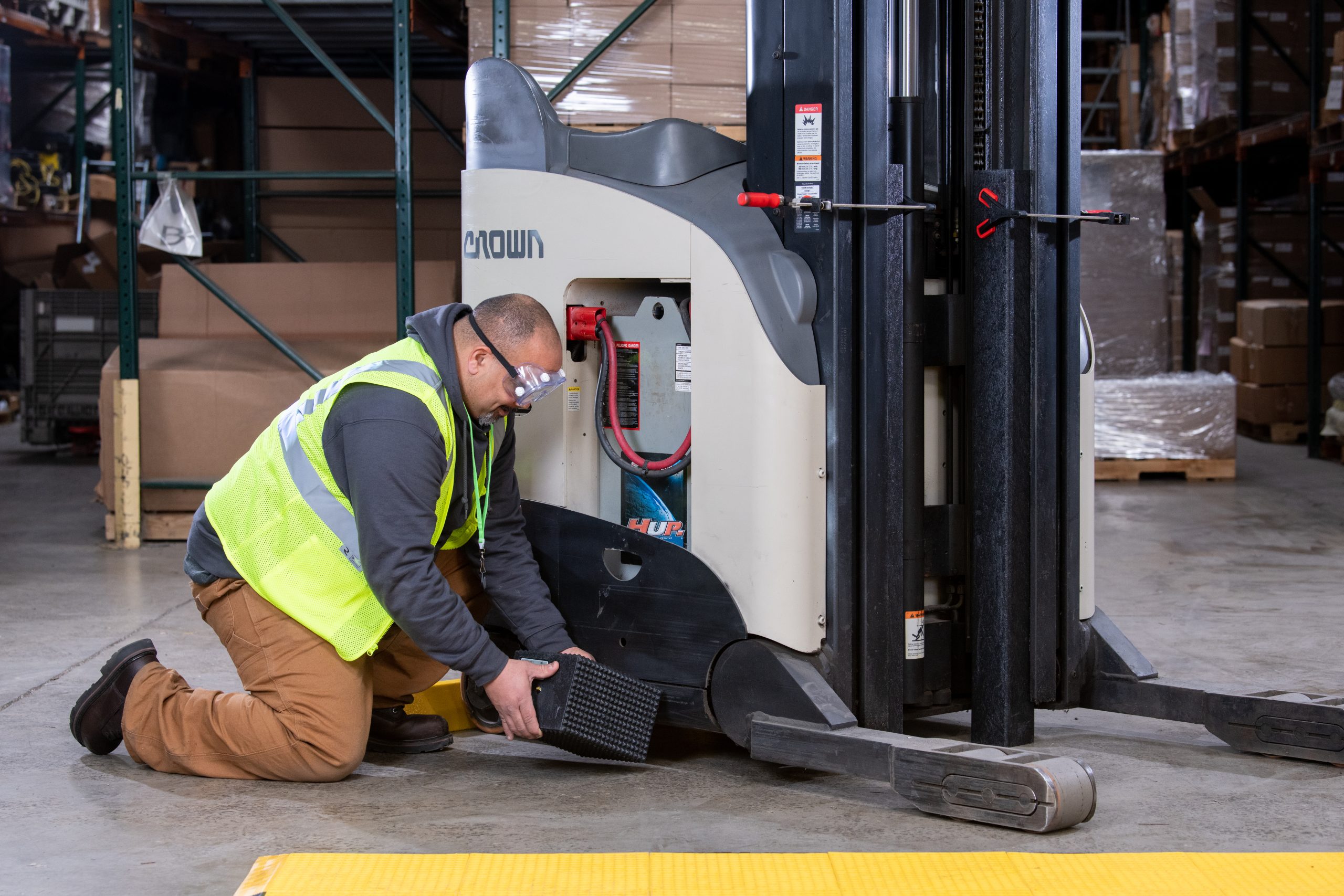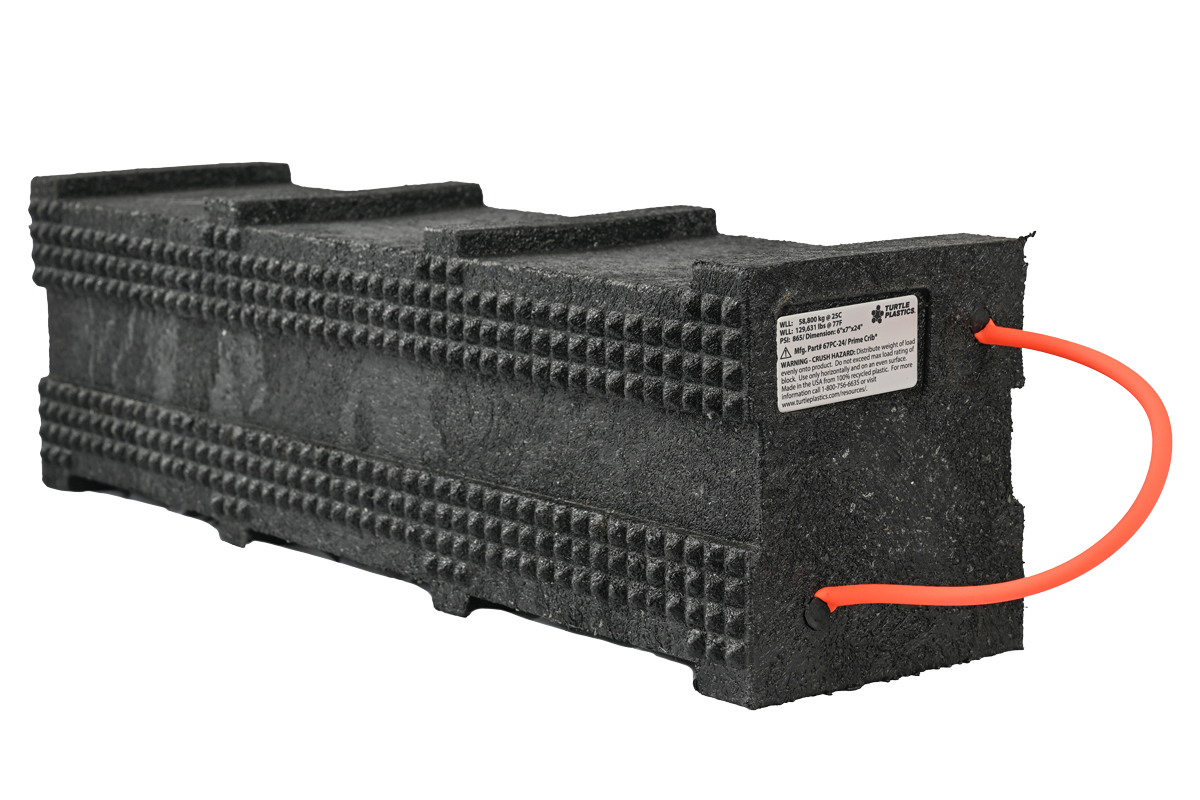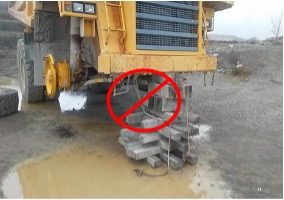Turtle Plastics is a global leader in manufacturing innovative, world-class environmental, health and safety stabilization products made in the USA from 100% recycled plastic. Our most popular products are the Dura Crib™ brand of blocks, chocks, and pads (together often referred to as “cribbing”). These products are used in many industries, as an alternative to wood when used to stabilize equipment during repair or maintenance. Sometimes, the Dura Crib™ blocks are used as a secondary source of “safety redundancy” with overhead cranes or hydraulic or pneumatic jack operations. Always ask for genuine Turtle Plastics brand of products.

Cribbing and lifting operations of equipment can be some of the most challenging, dangerous and hazardous tasks a technician may face either in the plant or field. Historically, as many of you are aware, wood has been one of the most popular materials used during lifting/cribbing operations, whether in an industrial plant or even during rescue operations to stabilize an overturned vehicle. Unfortunately, there are many safety concerns when it comes to the use of wood in these applications. There are too many factors that must be accounted for such as, the wood species, environmental exposure of the wood, splintering, dry rot and wood load rating changes due to external factors. We have seen way too many accidents at industrial facilities because of the wood breaking and entrapping a worker, or worse a fatality of the worker when the wood broke under a piece of heavy equipment.
It has been almost 20 years since we came out with the Dura Crib™ brand of blocks, chocks and pads as a SOLUTION and ALTERNATIVE material to wood in certain cribbing and blocking applications.
Wood Blocks are Unsafe and Can Result in Injuries and Death
- Wood may be load rated when brand new and the species is known. Yet it is not load-rated for consistency once the wood has been exposed to any negative environmental factor such as water, humidity, aridity and extreme temperatures. There’s too much guesswork to ensure safety. Dura Crib™ blocks, chocks and pads are lab tested and load rated for year over year reliable performance. Additionally, our products are labeled, so the technician knows the load rating of each block.
- Wood decays, decomposes, and becomes unstable. It will eventually crack and critically fail – resulting in a tragedy that could have been averted. Sometimes wood cracks are internal to the wood block and are not seen upon inspection. Our Dura Crib™ products reduce failure risk.
- Wood requires lumber, and tree quality will differ from year to year. Each annual harvest is different, so the quality of the wood blocks will be different. You need the consistency that Dura Crib™ provides. Also, we do not promote the deforestation of our Earth’s valuable resources.
- Wood blocks absorb oils, fuels, and biohazards – turning them into hazardous waste. Our plastic Dura Crib™ load-rated cribbing products do not absorb chemicals, and they can be decontaminated with an approved agent on the EPA-List N repeatedly for years without decaying or reducing the structural integrity of the product.
- There are never enough wood blocks when you need them. Unfortunately, people often grab anything they can from the shop to crib a job – an unsafe practice and huge liability in terms of human tragedy and potential lawsuits. Our products are sold worldwide and can be a phone call away for purchase.
Our Dura Crib™ Products are the Superior to Wood
All our Dura Crib™ products are load-rated – meaning that the products are lab tested and load rated and made with a reliable and repeatable formula. The working load ratings are based at an ambient temperature of 77°F/25ºC. Please note that temperature will reduce the working load when above or below the 77°F/25ºC.
All Dura Crib™ products have a lanyard to provide ergonomic relief when carrying the products.
The lanyards are color coded to provide a visual cue to the technician and the color relates to the general class of working load. For example, all orange lanyard products have “heavy-duty” capability. The lanyards are also in high visibility colors and the heavy-duty capability blocks such as the Slab®, Half Slab®, Prime Crib®, Super Black Diamond Crib XL™and Black Diamond Crib® have a reflective stripe to enable easier visibility of the block under darker environments.

Our Dura Crib™ interlocking blocks and pads assist with controlling hazardous energy created when using hydraulic or pneumatic tools. In fact, when used correctly, many of the Dura Crib™, Dura Stat™ smooth profile products and even Turtle Tile™ flooring products can help an organization stay OSHA compliant and prevent injury, fatalities, and non-compliance fines.
Dura Crib™ products can control hazardous energy creating “Lock Out Tag Out” under OSHA 29 CFR 1910.147 LOTO, compliant maneuver when stabilizing equipment or machinery.
Dura Crib™ products can control hazardous energy creating “Lock Out Tag Out” under MSHA 30 CFR § 57.14105 LOTO, compliant maneuver when stabilizing equipment or machinery. Certain Dura Crib™ products provide appropriate jacking under OSHA 29 CFR 1910.178(k)(3) to support a semi-trailer and prevent upending during loading or unloading when the trailer is not coupled to a tractor.
Certain Dura Crib™ and Dura Stat™ products can assist under OSHA 1910.178 (m)(7), chocking to prevent movement of trucks, trailers, or railroad cars while loading or unloading.
Certain Dura Crib™ and Dura Stat™ products can assist under OSHA §§1926.452(w) and 1926.453; when used to stabilize scissor lifts and aerial lifts.
Flooring is often overlooked as a potential workplace hazard. OSHA recommends that walking surfaces have a slip resistance static coefficient of friction of 0.5. Turtle Tile™ meets and exceeds the standard. In addition, Turtle Tile™ assembled with our safety ramps in contrasting colors can provide visual cues to help prevent trips and falls or to delineate safe walking pathways.
We offer complimentary product training either onsite at your facility or via web conferencing. For a quick reference of Dura Crib™ products, we publish the Dura Crib™ Working Load Guide on our Resources page of the website. We recommend this guide be placed wherever these products are being used in your organization. To avoid personal or property damage, we strongly recommend reading our manuals and guides before using our products, to have a clear understanding of the equipment’s owner’s manual, your organization’s policies on equipment maintenance and repair and to understand basic cribbing techniques through education and training. As always, please contact us for any questions.

No

Yes
Are you ready to create a safety-first best practice solution when it comes to cribbing materials? Explore our products, then contact us to learn more about our products and how we or one of our valued distribution partners can help find a solution for your organization.


